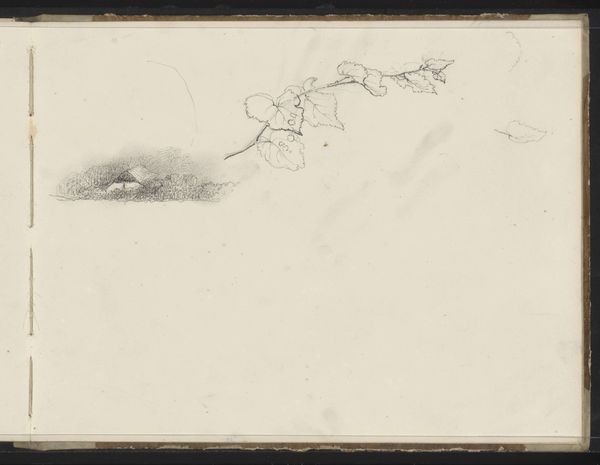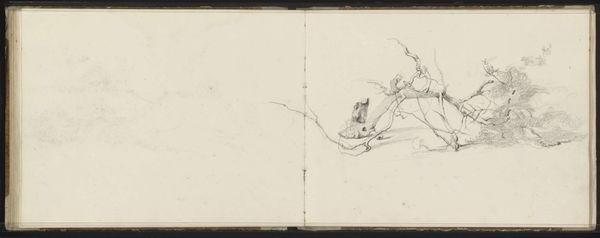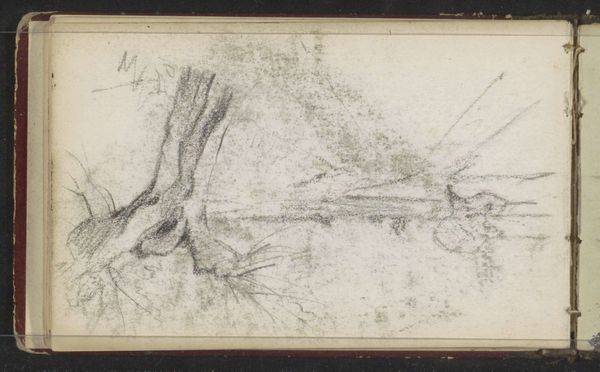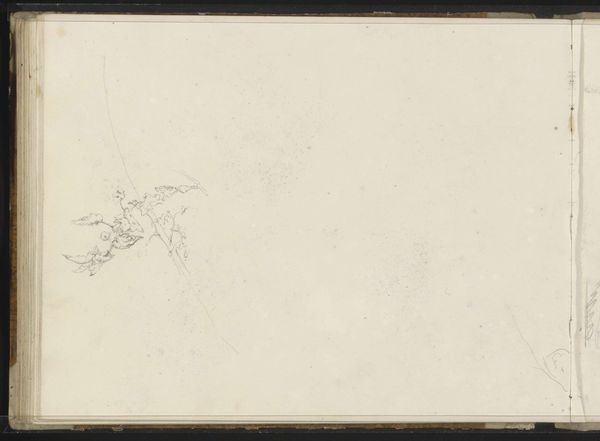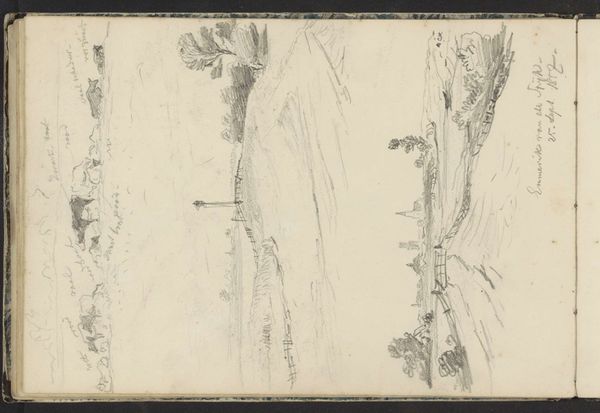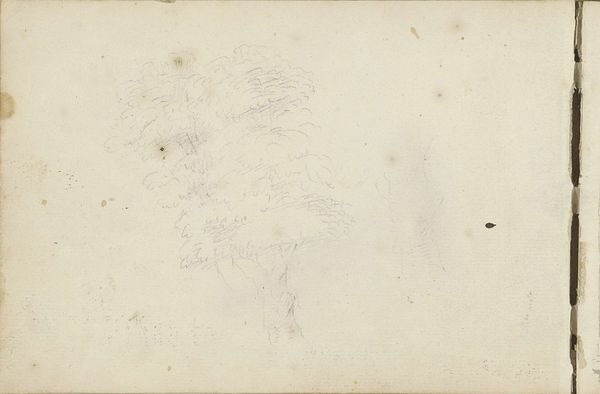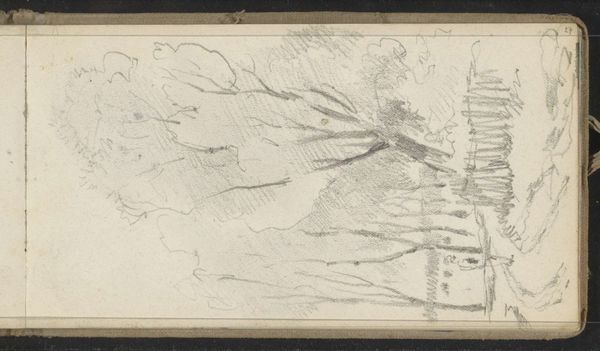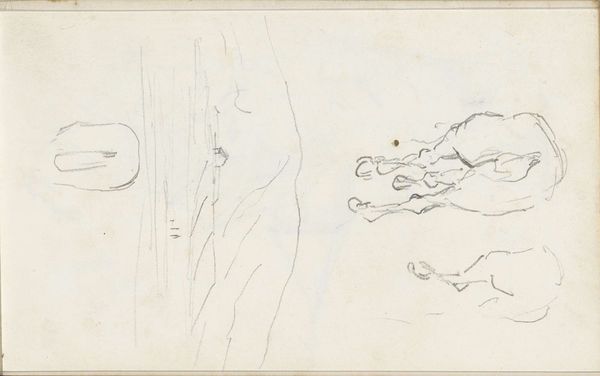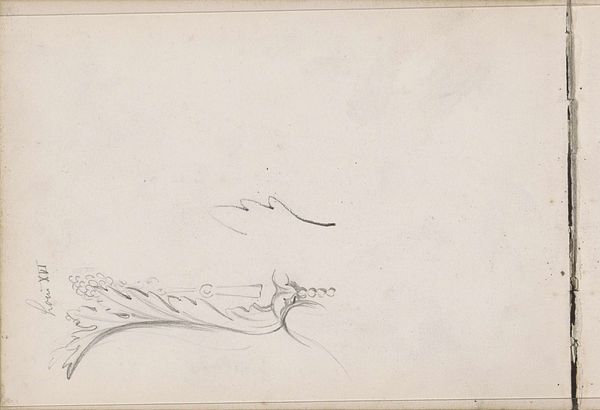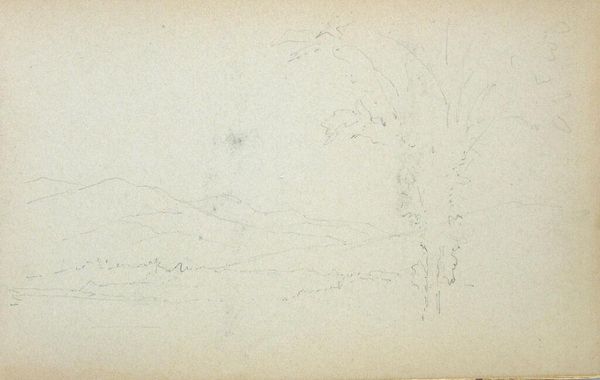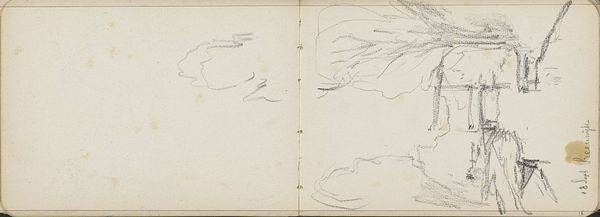
drawing, pencil
#
drawing
#
light pencil work
#
quirky sketch
#
pen sketch
#
hand drawn type
#
landscape
#
personal sketchbook
#
ink drawing experimentation
#
pen-ink sketch
#
pencil
#
line
#
pen work
#
sketchbook drawing
#
sketchbook art
#
realism
Copyright: Rijks Museum: Open Domain
Curator: Willem Cornelis Rip created this artwork, "Landschap met bomen," sometime between 1866 and 1922. It’s a pencil and pen drawing. Editor: Ah, a landscape, intimate in scale… almost feels like I’m peering into someone’s private musings in a cherished sketchbook. There’s something so raw and immediate about it. Curator: It's interesting you say "raw," given the level of materiality we can infer here. Rip seems interested in the production of this work, exploring the potential of graphite and ink and, I imagine, cheap paper within the means available to him. Consider, too, the availability of sketchbooks at that time, serving both artistic and commercial needs. Editor: You’re right about that intimate quality probably coming from those sketchbook materials. But the image itself feels ephemeral. Those quick, scratchy lines, almost hesitant… did he plan to elaborate, I wonder, or was it the destination? A fleeting moment of capture, more mood than matter? Curator: Consider the economic backdrop—Rip might have viewed these sketches as crucial steps towards larger, more lucrative commissions. This wasn’t merely whimsical doodling, but possibly essential labor, where quick studies tested ideas for finished landscapes intended for the market. The line quality itself can also inform a certain artistic production practice of that time. Editor: Production demands aside, the light in the rendering grabs me! See how the sparse use of shading suggests volume without closing things in? The blank space sings, a testament to nature’s exhale! It's suggestive rather than conclusive; you project yourself into the woods... the air smells of damp leaves and pine. Curator: That interplay you sense likely relates to material availability: limiting choices for deeper explorations of value range or complex tonal relationships. Furthermore, his access and perhaps familiarity with paper types clearly informed his approach. Editor: I’d love to know where this spot was. What moved Rip to memorialize this specific collection of trees… Perhaps it was simply a break from formal works? A stolen moment in the shade! I imagine him in worn boots, a quiet observer to the rhythms of sunlight. Curator: What interests me more are the material circumstances that shaped this quiet observation you suggest. To understand Rip’s process is to understand artmaking less as an individual genius at work but part of larger social processes, including material access. Editor: Well, either way, it remains for us an enchanting invitation to contemplate how, from the barest means, great impressions spring!
Comments
No comments
Be the first to comment and join the conversation on the ultimate creative platform.
